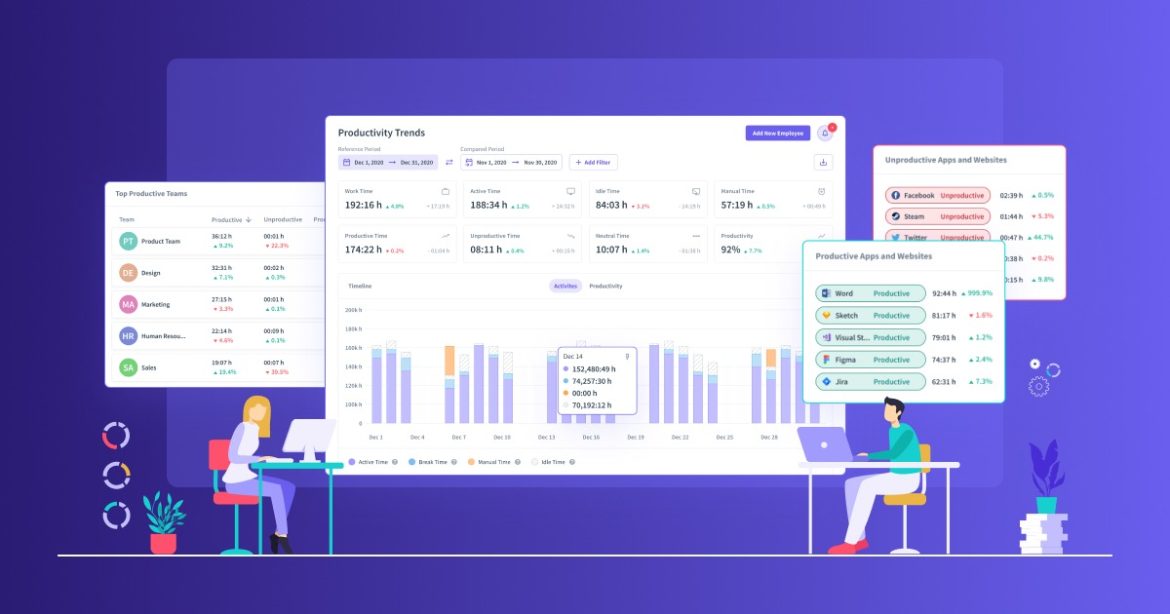In today’s fast-paced world, personal productivity is more crucial than ever. Whether you’re a student, a professional, or an entrepreneur, staying organized and efficient is key to success. Fortunately, the realm of personal productivity software has seen significant advancements over the past few years. In this article, we’ll explore the latest trends and innovations in personal productivity software that can help you streamline your tasks, boost your efficiency, and achieve your goals.
The Rise of AI-Powered Assistants
Artificial Intelligence (AI) has made its mark on personal productivity software. AI-powered virtual assistants like Siri, Google Assistant, and Cortana have become integral parts of our lives, helping us manage our schedules, set reminders, and answer our questions. These AI-driven tools are continually improving, becoming more intuitive and personalized with each update.
One notable trend is the integration of AI assistants with task management applications. Imagine having a virtual assistant that not only schedules your meetings but also suggests the best times based on your previous commitments and preferences. These AI-powered features are making personal productivity software more efficient and user-friendly than ever before.
Cross-Platform Compatibility
In the past, personal productivity software often tied users to specific operating systems or devices. However, the trend now is to provide cross-platform compatibility. This means that you can access your productivity tools and data seamlessly across various devices and operating systems, whether it’s your smartphone, tablet, or desktop computer.
Cloud-based solutions have played a significant role in enabling cross-platform compatibility. Services like Microsoft 365 and Google Workspace allow users to create, edit, and collaborate on documents from anywhere with an internet connection. This flexibility enhances productivity by eliminating the need to switch between different tools or devices.
Gamification for Motivation
One of the intriguing innovations in personal productivity software is the incorporation of gamification elements. Gamification involves using game-like features such as points, badges, and challenges to motivate users and make tasks more engaging.
Several task management and goal-setting applications now employ gamification to encourage users to complete their to-do lists and stay on track with their goals. For example, users can earn virtual rewards for completing tasks, and they can compete with friends or colleagues to see who accomplishes more. This approach can turn mundane tasks into exciting challenges, increasing overall productivity.
Focus on Mindfulness and Well-being
In an era where stress and burnout are prevalent, personal productivity software is beginning to address the importance of mental health and well-being. Some productivity tools now include features to help users take breaks, practice mindfulness, and manage their overall work-life balance.
These features can include reminders to stand up and stretch, guided meditation sessions, or even tracking your daily screen time to promote digital detox. By integrating well-being features, these tools aim to enhance productivity while ensuring users maintain a healthy work-life balance.
Enhanced Collaboration Features
Collaboration is at the core of many personal productivity tasks, from team projects to family planning. To cater to this need, productivity software is continuously improving its collaboration features.
Real-time collaboration on documents is now a standard offering in many productivity suites. Google Docs, for example, allows multiple users to edit a document simultaneously, while project management tools like Trello enable teams to work together on shared boards. Integration with communication tools such as Slack and Microsoft Teams further enhances collaboration, making it easier for team members to communicate and coordinate their efforts.
Conclusion
Personal productivity software has come a long way in recent years, with new trends and innovations aimed at making our lives easier and more efficient. AI-powered assistants, cross-platform compatibility, gamification, mindfulness features, and enhanced collaboration tools are just a few examples of how this software is evolving.

